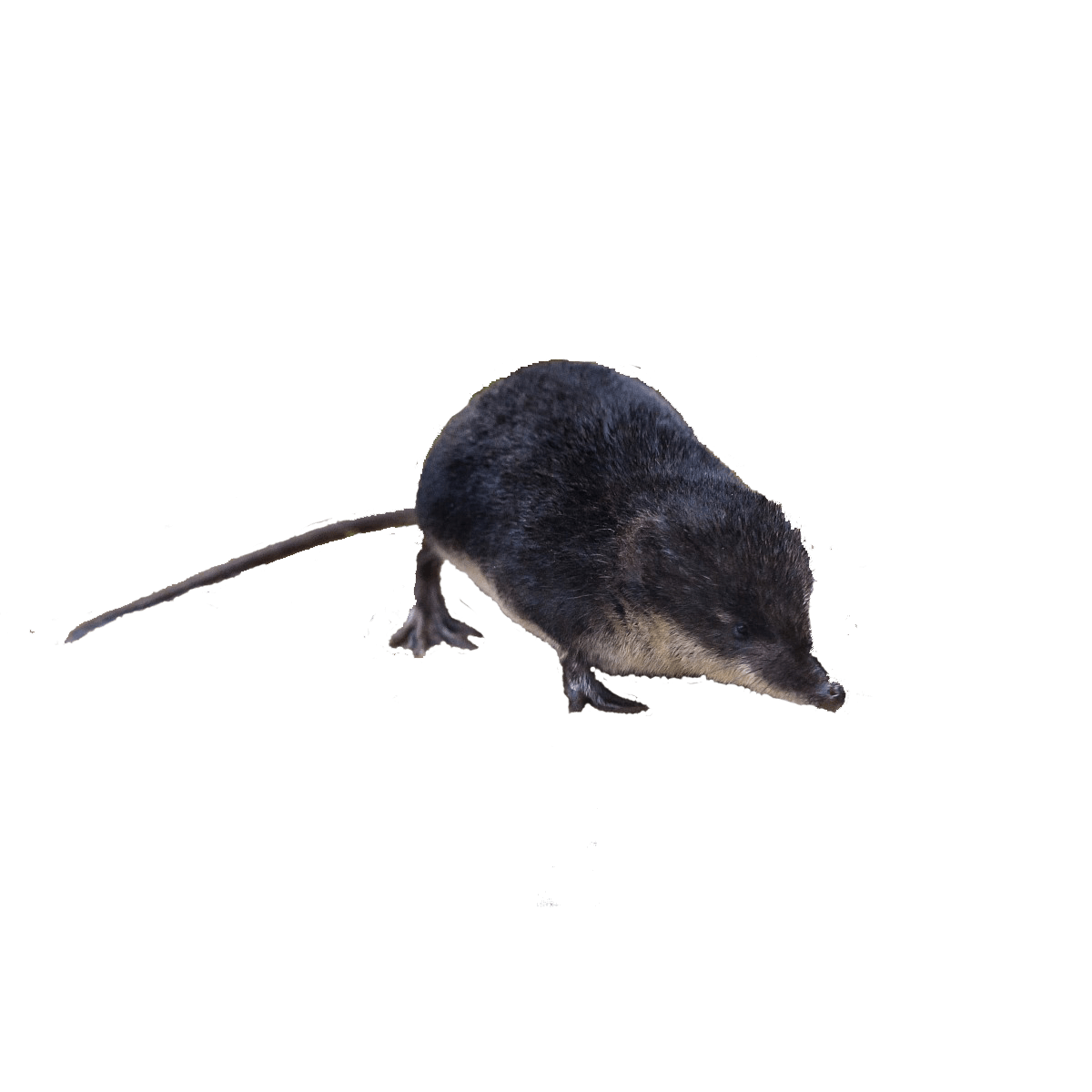The Neomys fodiens (Eurasian water shrew) eDNA detection kit is able to detect the mammal species Neomys fodiens in all droppings and soil samples worldwide and contains enough materials for 20 samples to be analysed in 8 fold (200 qPCR tests). The kit is based on the fast, sensitive, and proven primers/probe qPCR technique. The kit contains primers and a probe for detecting a highly specific sequence present on the mitochondrial DNA of the species Neomys fodiens.
Be aware: Using soil as a sample has a chance of picking up ancient DNA of water shrews from years ago. DNA is highly stable connected to soil particles.
Species information
The Eurasian water shrew (Neomys fodiens), known in the United Kingdom as the water shrew, is a relatively large shrew, up to 10 cm (4 in) long, with a tail up to three-quarters as long again. It has short, dark fur, often with a few white tufts, a white belly, and a few stiff hairs around the feet and tail. It lives close to fresh water, hunting aquatic prey in the water and nearby. Its fur traps bubbles of air in the water which greatly aids its buoyancy, but requires it to anchor itself to remain underwater for more than the briefest of dives.
Like many shrews, the water shrew has venomous saliva, making it one of the few venomous mammals, although it is not able to puncture the skin of large animals, nor that of humans. Highly territorial, it lives a solitary life and is found throughout the northern part of Europe and Asia, from Britain to Korea.
In English: Eurasian water shrew
In German: Wasserspitzmaus
In French: Crossope aquatique, Crossope, Musaraigne d’eau, Musaraigne aquatique, Musaraigne ciliée, Musaraigne porte-rame
In Dutch: Waterspitsmuis
Primer design
The primers and probe are specially designed to be used with eDNA samples and have the following properties:
- Highest possible sensitivity (1 DNA copies per reaction). Environmental water samples contain normally very low amounts of target DNA.
- Strong fluorescence signal with low background noise. Isolated environmental samples contain residues of naturally occurring auto fluoresce substances that will interfere with the measurements. A strong fluorescence signal from the analyses is required for these kind of samples.
- 100% specificity. Isolated DNA from environmental samples contains billions of DNA fragments from bacteria, protozoa, plants, animals, etc.
The kit is developed and optimized to be used on eDNA isolates purified using the eDNA isolation kit (#SYL002) from Sylphium molecular ecology.
Kit contents
The kit contains materials for an 8 fold analyses on 20 samples including all necessary controls.
- Positive control (Neomys fodiens DNA)
- 2x Sylphium qPCR mix (100 reactions) without primers and probes
- 2x Primer/probe mix (100 reactions) for detection of Neomys fodiens (FAM dye)
- 1x Taq DNA polymerase (200 reactions)
- Protocol and primer/probe validation report
Manual

















